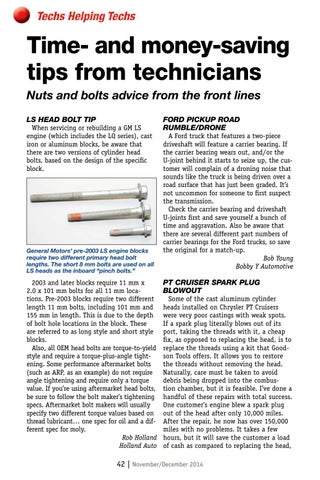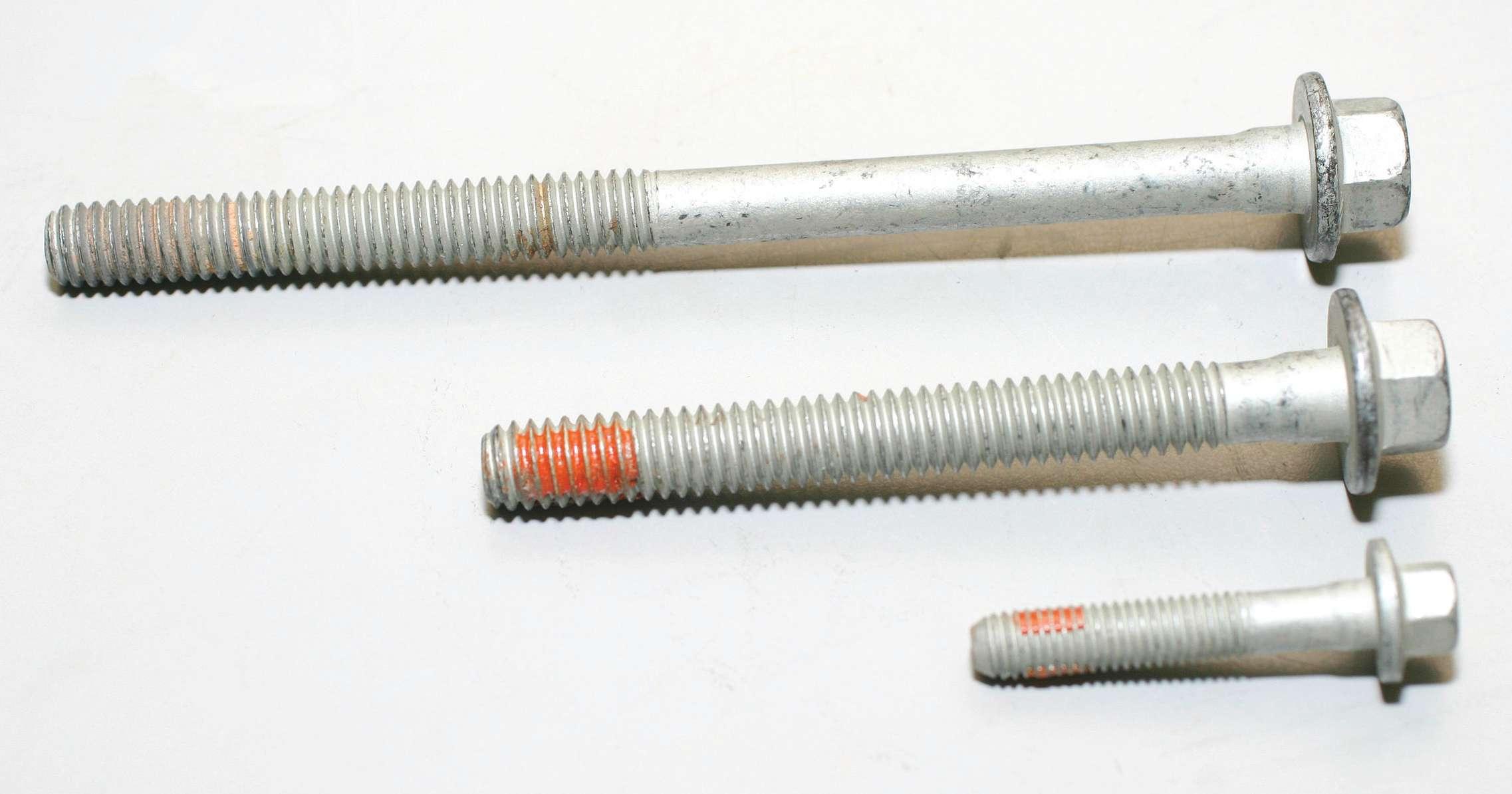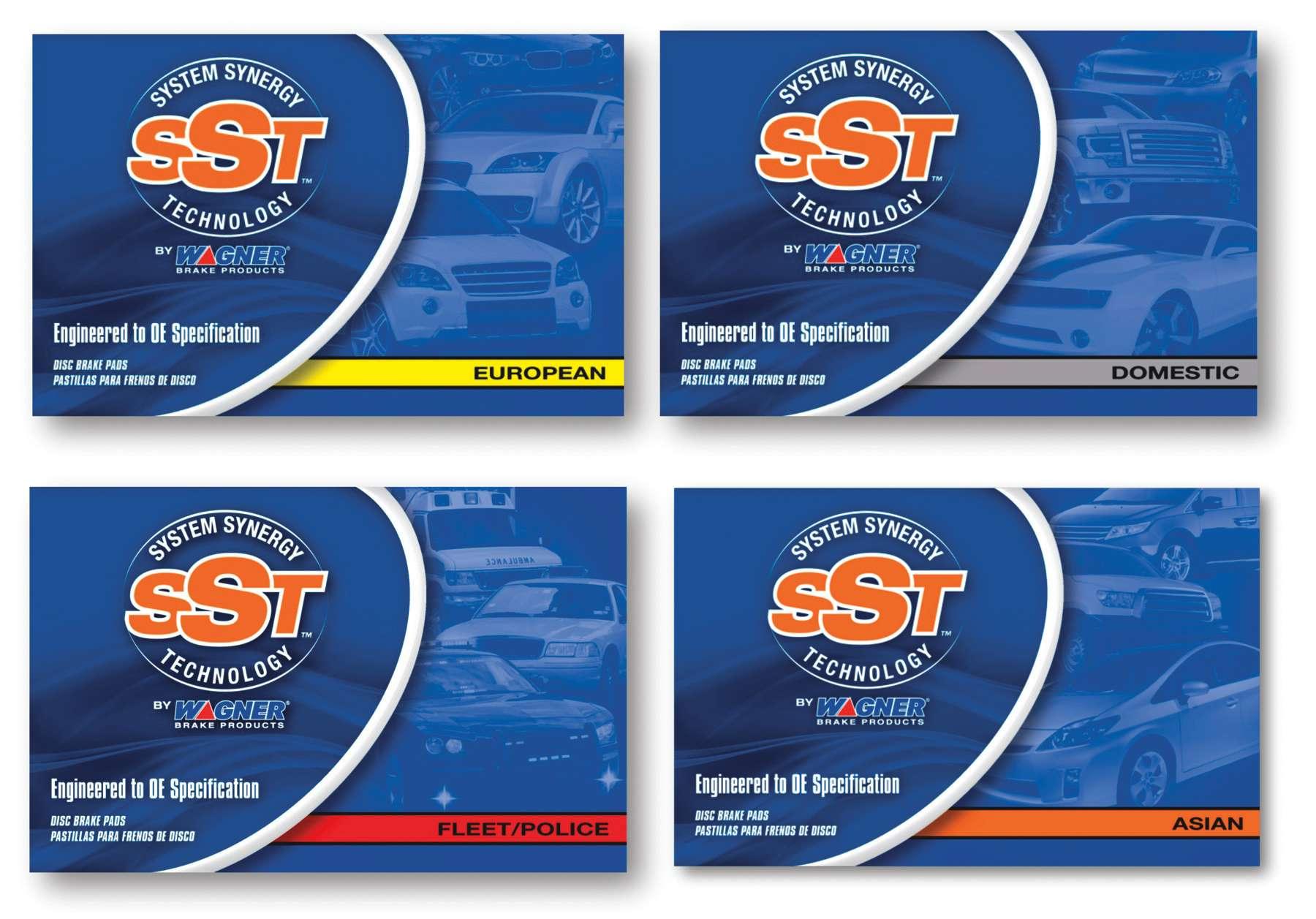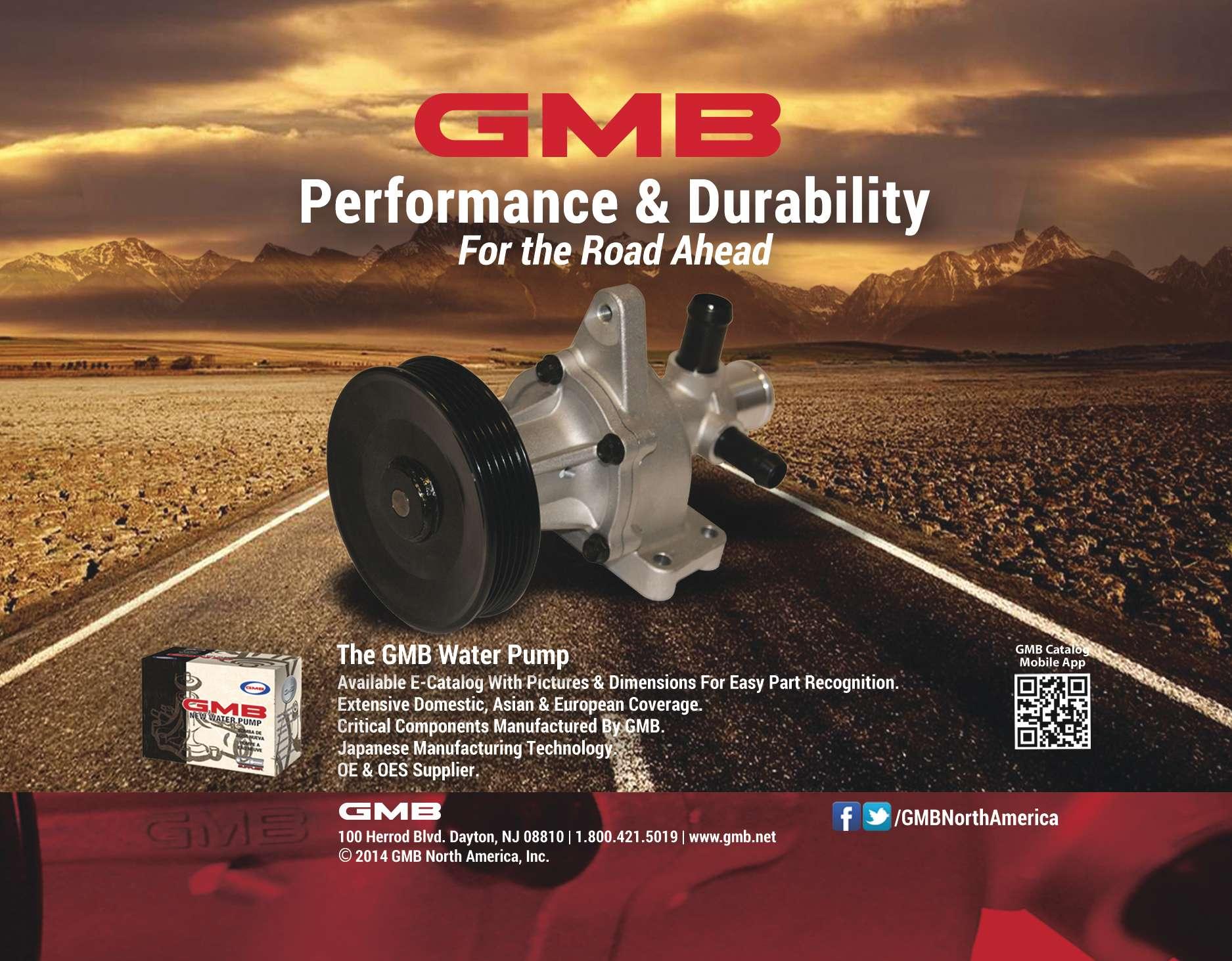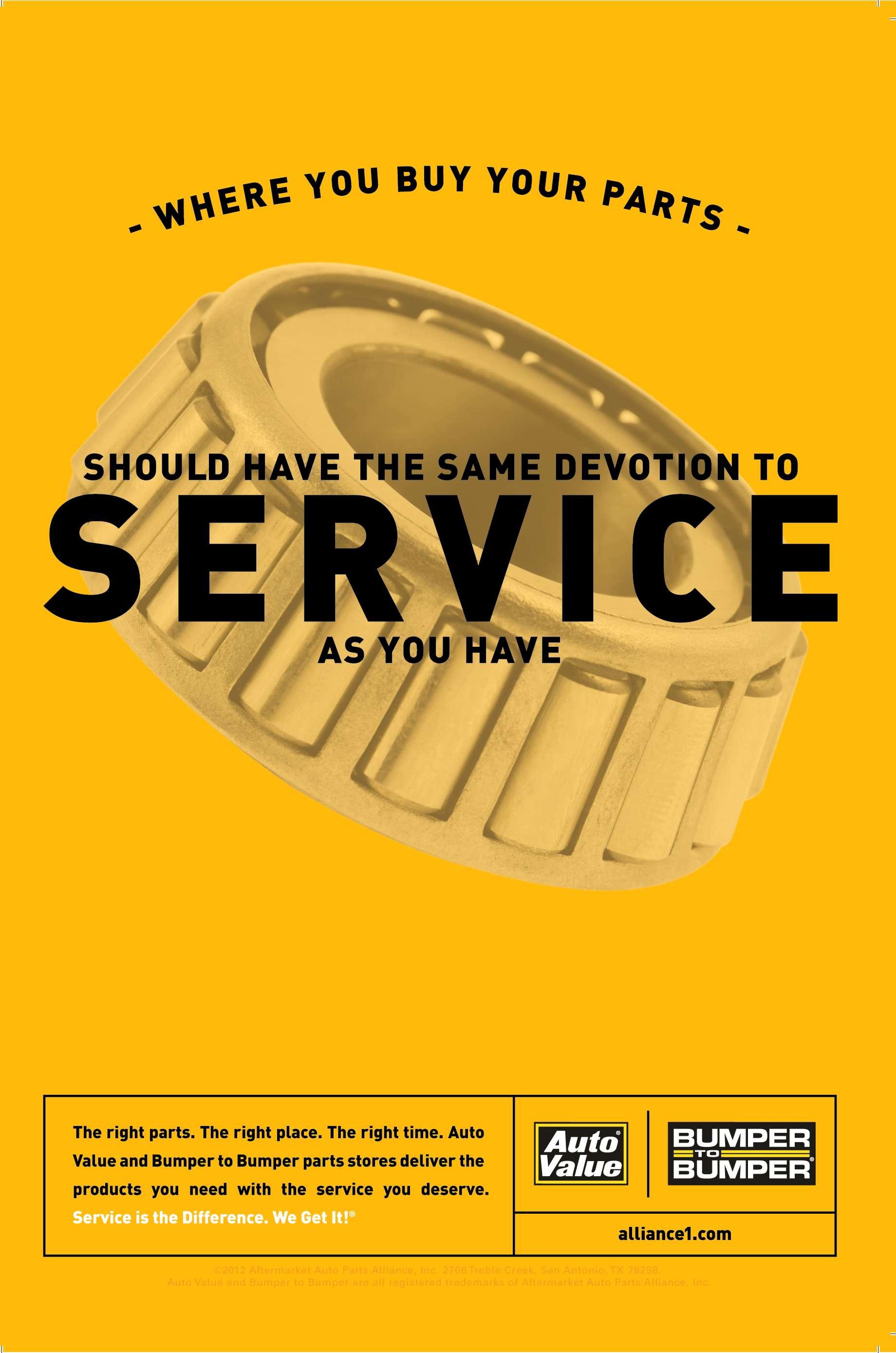Time- and money-saving tips from technicians Nuts and bolts advice from the front lines LS HEAD BOLT TIP When servicing or rebuilding a GM LS engine (which includes the LQ series), cast iron or aluminum blocks, be aware that there are two versions of cylinder head bolts, based on the design of the specifc block.
General Motors’ pre-2003 LS engine blocks require two different primary head bolt lengths. The short 8 mm bolts are used on all LS heads as the inboard “pinch bolts.”
2003 and later blocks require 11 mm x 2.0 x 101 mm bolts for all 11 mm locations. Pre-2003 blocks require two different length 11 mm bolts, including 101 mm and 155 mm in length. This is due to the depth of bolt hole locations in the block. These are referred to as long style and short style blocks. Also, all OEM head bolts are torque-to-yield style and require a torque-plus-angle tightening. Some performance aftermarket bolts (such as ARP, as an example) do not require angle tightening and require only a torque value. If you’re using aftermarket head bolts, be sure to follow the bolt maker’s tightening specs. Aftermarket bolt makers will usually specify two different torque values based on thread lubricant… one spec for oil and a different spec for moly. Rob Holland Holland Auto
FORD PICKUP ROAD RUMBLE/DRONE A Ford truck that features a two-piece driveshaft will feature a carrier bearing. If the carrier bearing wears out, and/or the U-joint behind it starts to seize up, the customer will complain of a droning noise that sounds like the truck is being driven over a road surface that has just been graded. It’s not uncommon for someone to frst suspect the transmission. Check the carrier bearing and driveshaft U-joints frst and save yourself a bunch of time and aggravation. Also be aware that there are several different part numbers of carrier bearings for the Ford trucks, so save the original for a match-up. Bob Young Bobby Y Automotive
PT CRUISER SPARK PLUG BLOWOUT Some of the cast aluminum cylinder heads installed on Chrysler PT Cruisers were very poor castings with weak spots. If a spark plug literally blows out of its port, taking the threads with it, a cheap fx, as opposed to replacing the head, is to replace the threads using a kit that Goodson Tools offers. It allows you to restore the threads without removing the head. Naturally, care must be taken to avoid debris being dropped into the combustion chamber, but it is feasible. I’ve done a handful of these repairs with total success. One customer’s engine blew a spark plug out of the head after only 10,000 miles. After the repair, he now has over 150,000 miles with no problems. It takes a few hours, but it will save the customer a load of cash as compared to replacing the head,
42 | November/December 2014
